Coming into Myanmar, we circled the country counter-clockwise from Yangon, hoping to save the best for last – Bagan. It is a national treasure. Many tout Bagan as the Angkor of Myanmar, or Angkor for the next generations. We were careful not to go in expecting that it would be similar to Angkor, and we were thrilled to find Bagan to be magnificent in its own way.
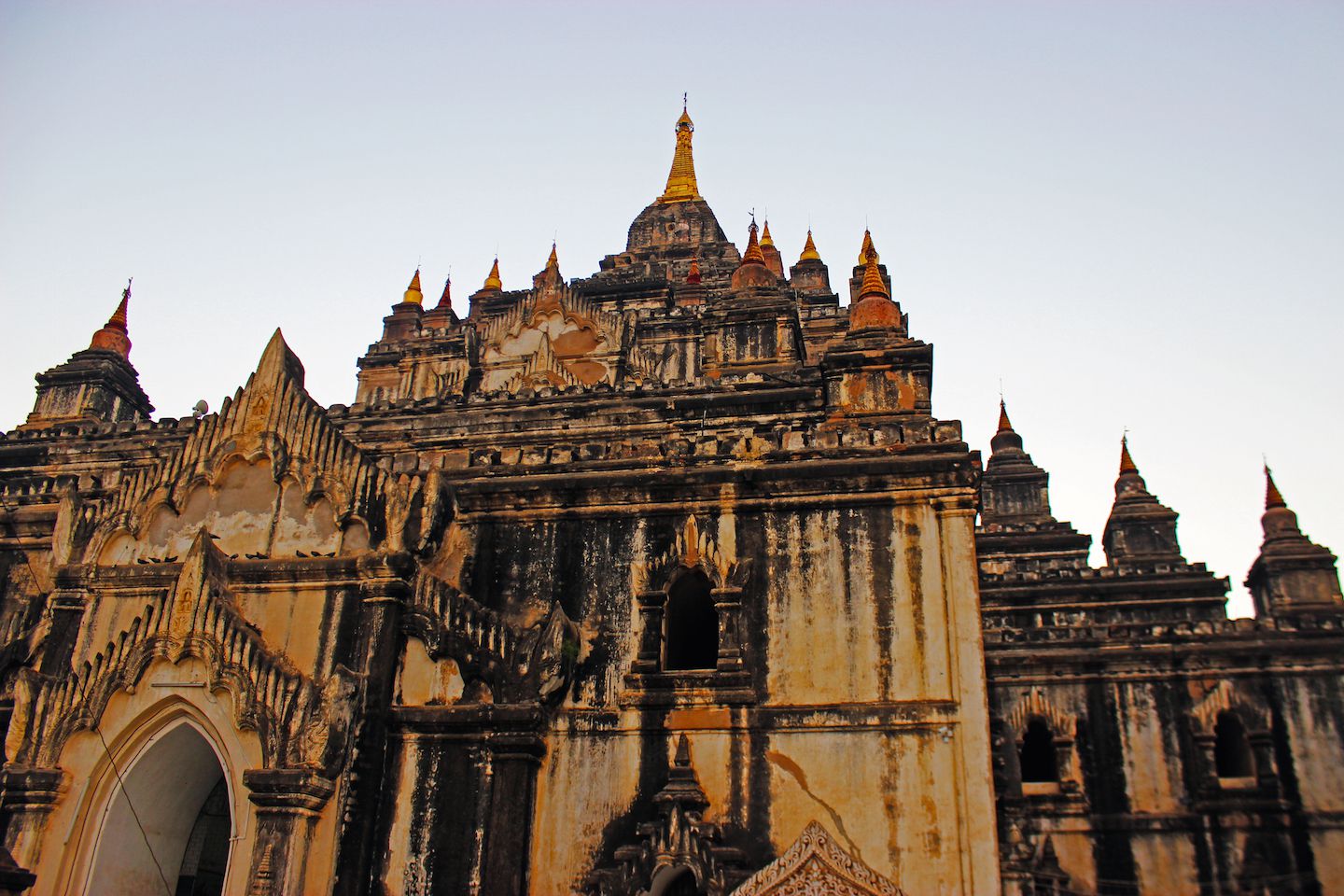
Myanmar was once known as the Kingdom of Pagan of which Bagan was the old capital. Bagan today is what remains from the height of that period in history. The Pagan Empire built over tens of thousands of Buddhist temples, pagodas, and monasteries in the plains of Bagan over the course of a few hundred years. It became a center of religion for all forms of Buddhism and a pilgrimage destination. Only a little over 2000 have survived to present day at the Bagan Archaeological Zone mostly due to frequent earthquakes in the region.
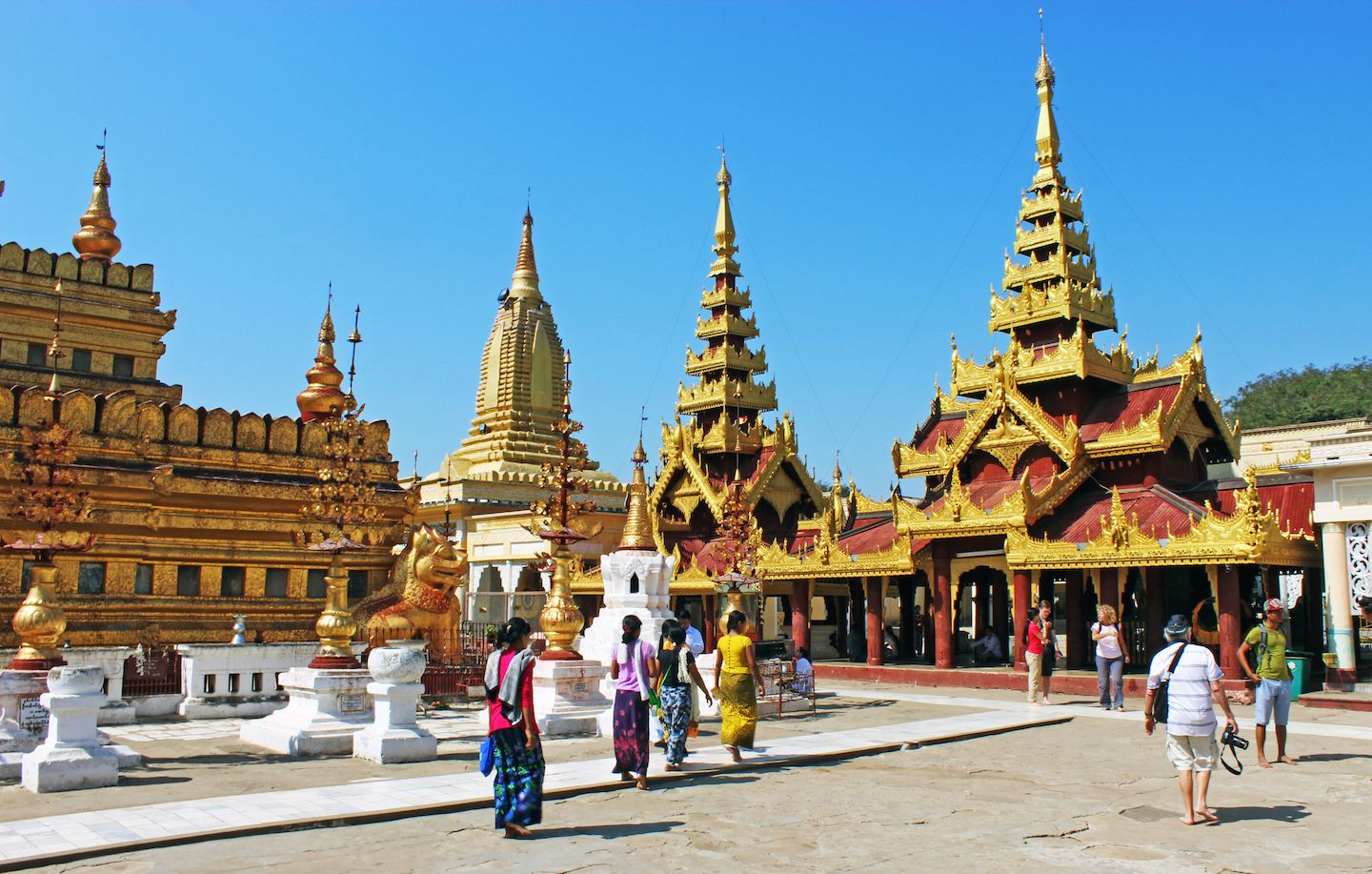
The best way to explore Bagan was to go temple hopping! Traditionally, horse carts were used as the means of transportation, but modern days have popularized bicycles and electric bikes. We found electric bikes for rent in the nearby town of Nyaung U where we stayed that fit two people. The night before our full-day plan to temple-hop, we gave it a test run. It worked surprisingly well! The bikes were not designed for two huge people (by Asian standards) like Carlos and I, but it survived. It was so much better than peddling on a regular bike with aching bums and straining knees.
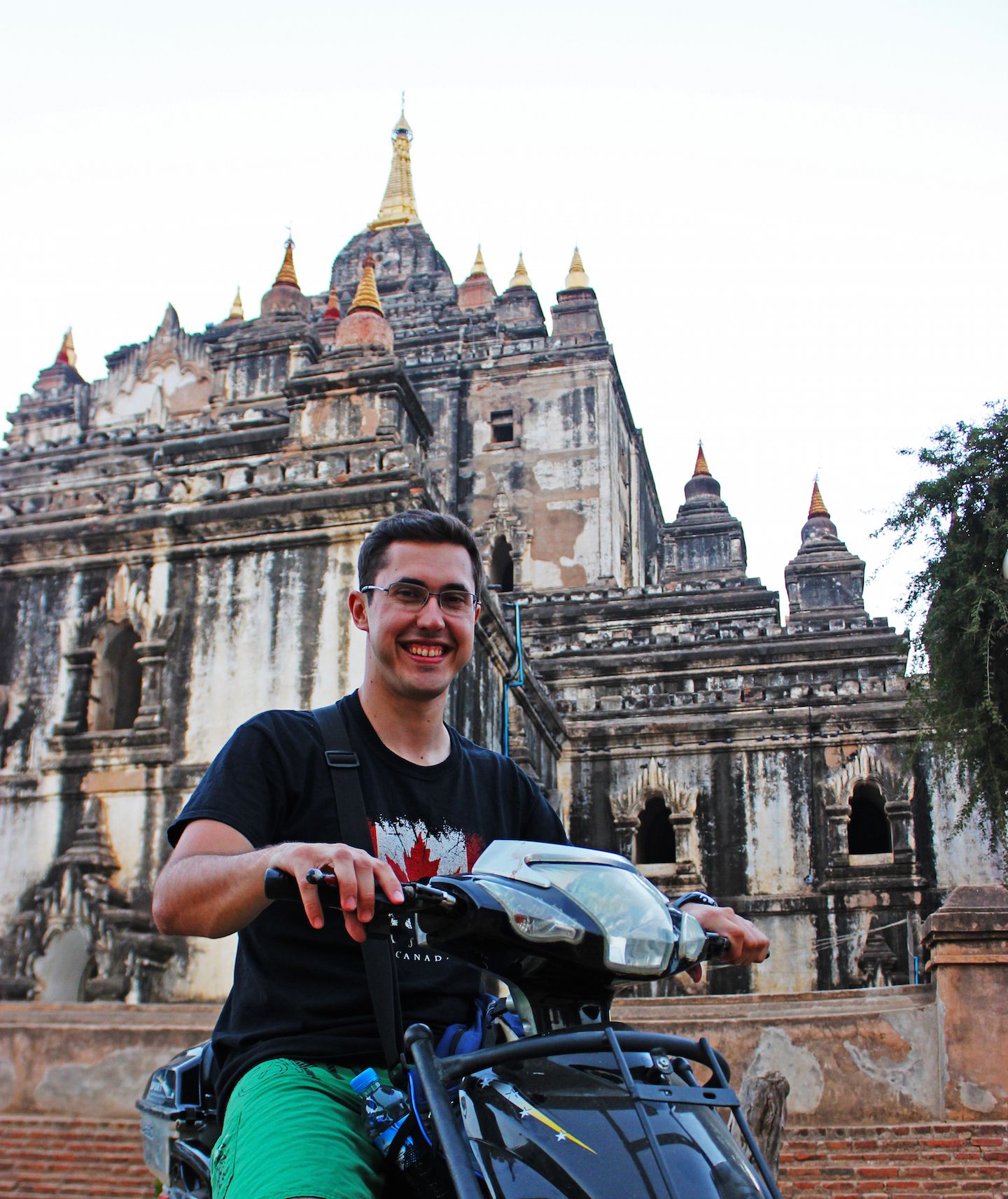
We set off the next day later than originally planned. I missed getting up at the crack of dawn to see sunrise (night buses tire you out more than you would expect), but the main attraction was sunset anyway. Over the course of a few hours, we hit all the temples on our list of main temples to visit. It was very different than visiting the temples at Angkor where we easily spent an hour (if not more) per temple. Here in Bagan, each temple by itself was fairly small. Buddha statues were ubiquitous. Usually only the ground-level was open to visitor in an attempt to preserve the temple, so a circle around was often short and sweet.
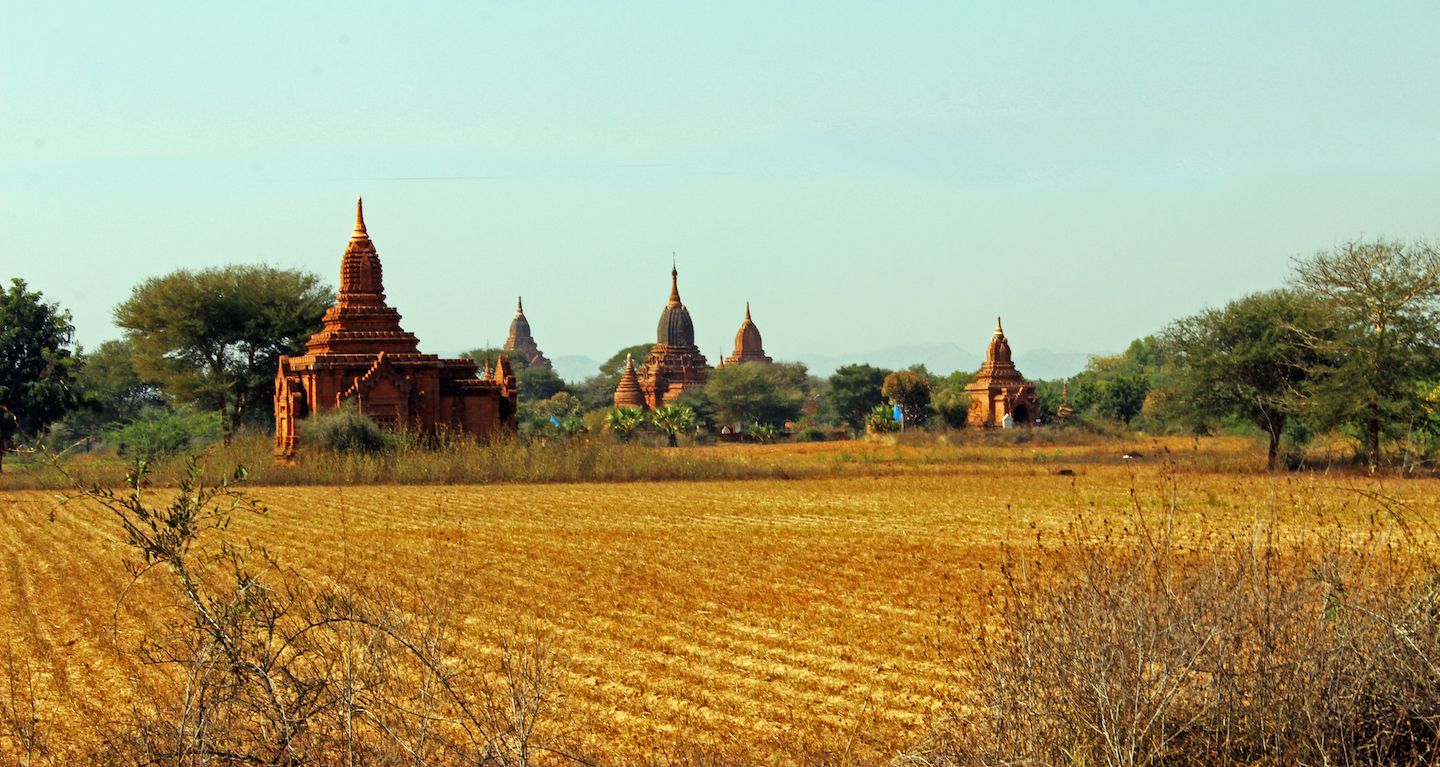
Nonetheless, the temples in Bagan exhibited distinctive architecture: either stupa-style solid temples or hollow ones. Stupa-style solid temples like Shwezigon Pagoda and Shwesandaw Pagoda were bell-shaped with ceremonial umbrellas extended on top. Hollow temples like Gawdawpalin Temple and Dhammayangyi Temple had pointed arches and vaulted chambers with multi-faced entrances facing cardinal directions. Even though most temples fell into one of these two categories, every single one looked different than the one next to it.
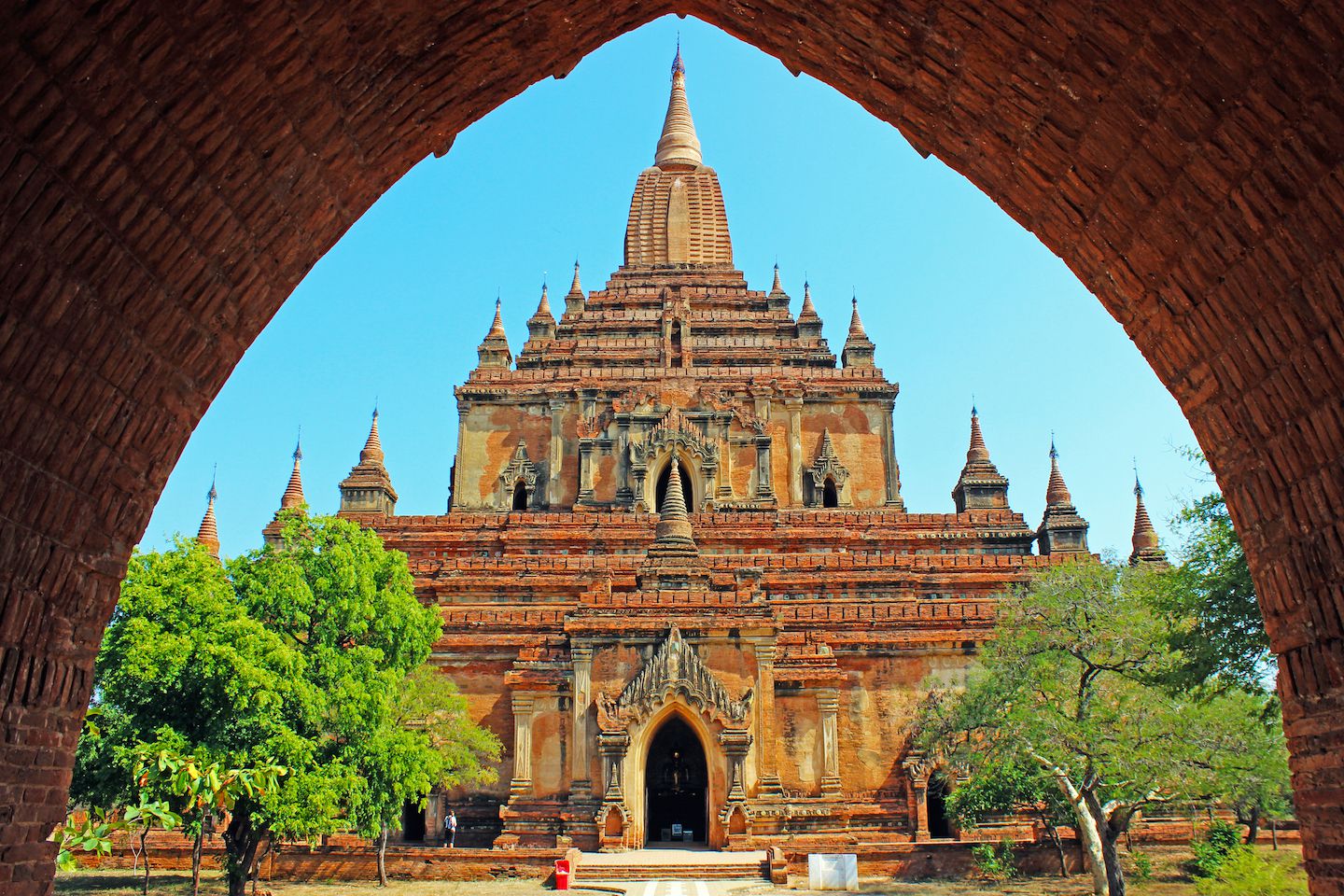
It’s hard to describe in words what these temples look like and even harder to imagine while reading these descriptions. We read a really good analogy online – the tops of Angkor temples look like artichokes and corncobs, while the tops of Bagan temples look like gourds and durians. Having been to both, I can say that this analogy is pretty good! Inverted ice cream cones is another easy to visualize yet pretty accurate imagery of the tops of Bagan temples. All of them had that beautifully aged look combined with exquisite architecture.
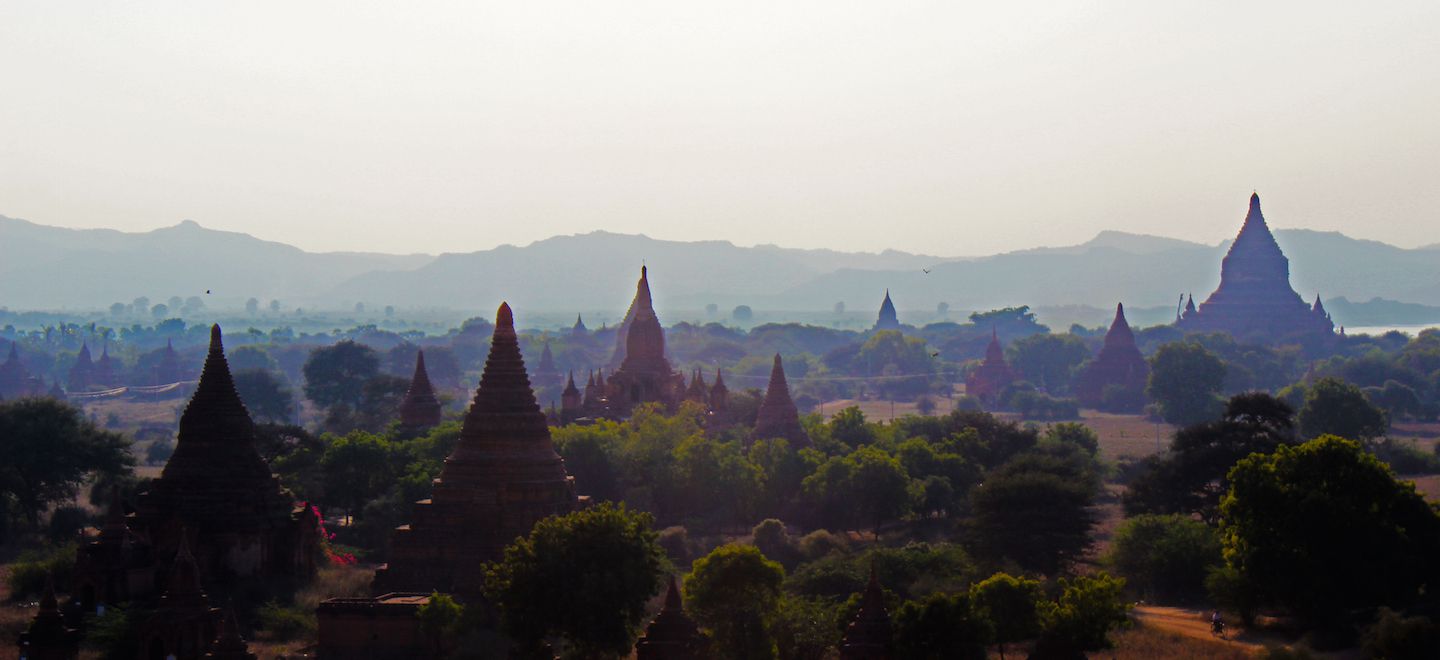
Due to frequent earthquakes as well as erosion and neglect over the years, many temples have been restored by the Myanmar government. However, much of the restorations neglected original architectural styles and materials, which drew a great deal of criticism worldwide. This was evident during our visit. Some temples didn’t look like ruins anymore, but rather as if it was constructed yesterday. It was unsettling and it didn’t look right. The questionable restorations have compromised parts of the archaeological site. This has also been why Bagan has not yet been designated a UNESCO World Heritage Site, even though one would expect it to be a shoo-in.

Our highlights from temple hopping in Bagan were mostly unexpected. In the middle of the desert plains filled with cacti, a bunch of bright pink flowers flourished in front of Sulamani Temple. It only added to the already striking landscape. At the most sacred Ananda Temple, the face of Buddha changed as you walked further away from it – his lips curved into a smile! We thought that was pretty cool. Climbing to the second level of Shwegugyi gave us a panoramic view of the surrounding temples.

However, nothing beats the sunset at Bagan. Hands down, the absolute best way to enjoy Bagan was to climb Schwesandaw Temple (“sunset” temple) and see the plain of temples from above.
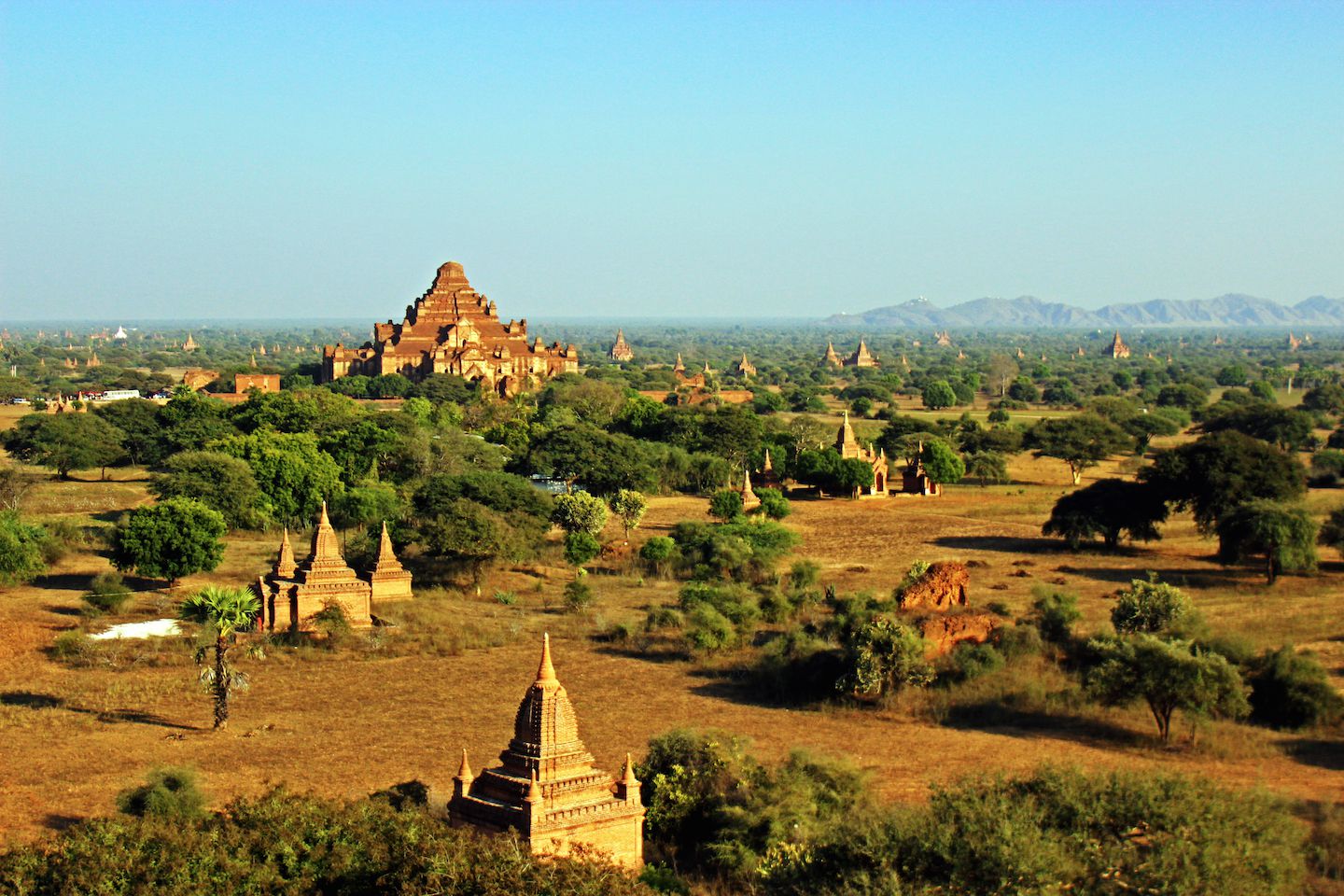
Each temple may be small by itself, but thousands of temples in the visible distance was a sight to behold. I’m convinced there was no better view in all of Myanmar. It was here that we experienced the wonders of Bagan and were blown away. The blood-red sun eventually cast the entire plain in shadows and the silhouettes of temples with splashes of colour in the sunset sky as a backdrop was icing on the cake.
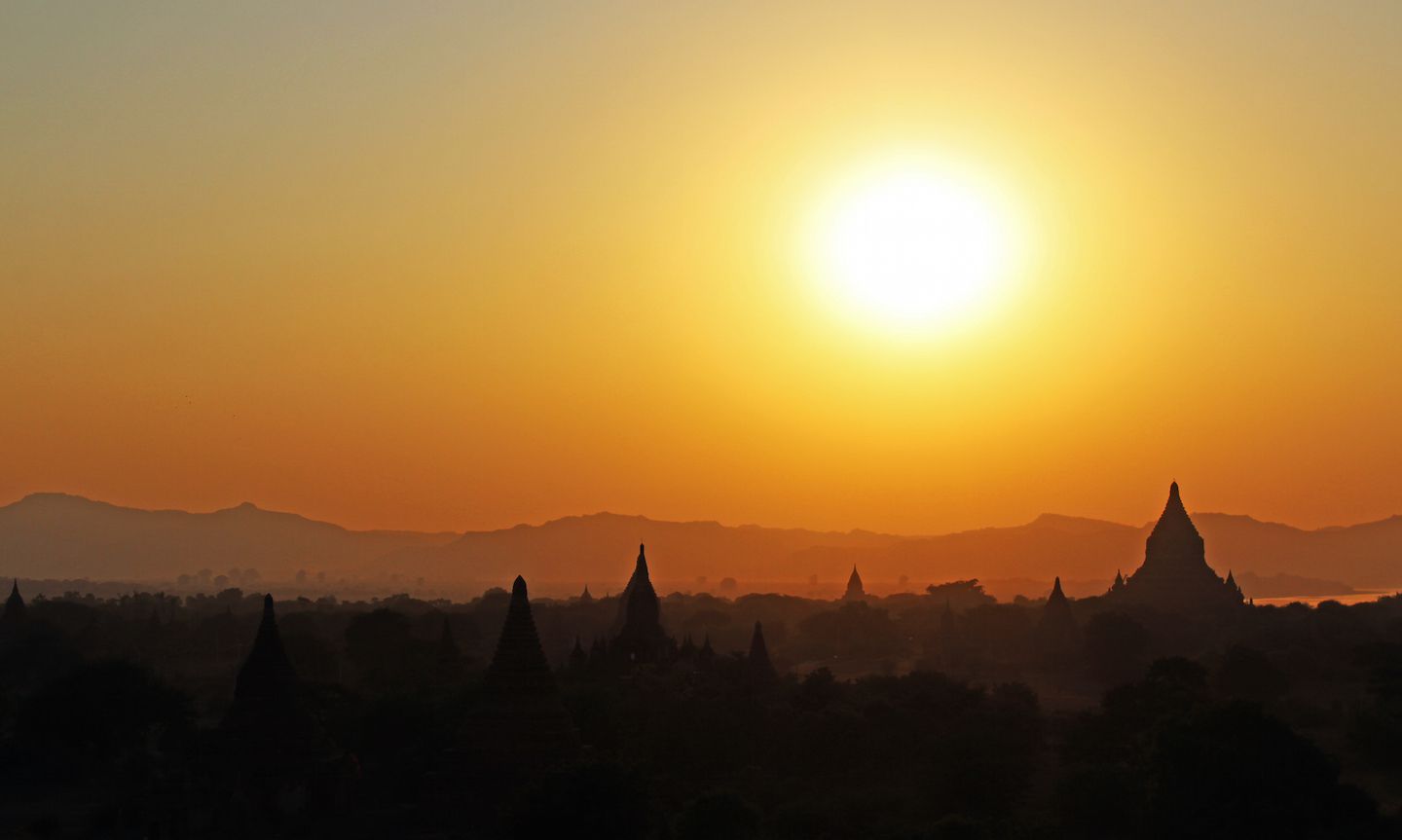
While we did not explore the temples of Bagan nearly as extensively as the temples of Angkor, we felt like we got a good sense of this archaeological site. Bagan served us temples like tapas, and we stayed long enough to appreciate the variety and try the most delicious ones. We had a fun day riding an electric bike with the freedom to roam around Bagan on our own. There’s no doubt that the image of countless temples scattered over the plains of Bagan will be forever etched in our minds.
For more pictures from Bagan, please visit the gallery!

